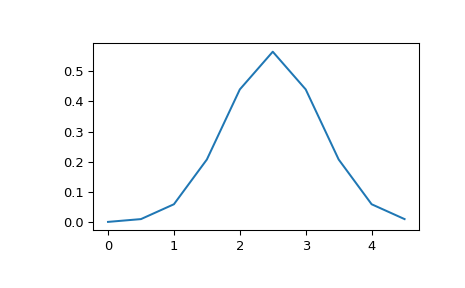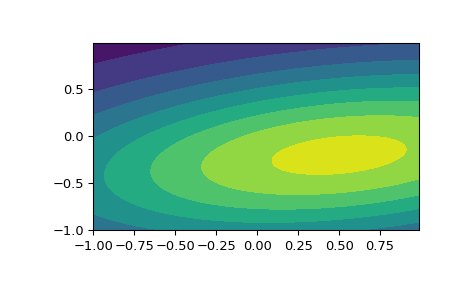scipy.stats.multivariate_normal¶
-
scipy.stats.multivariate_normal(mean=None, cov=1, allow_singular=False, seed=None) = <scipy.stats._multivariate.multivariate_normal_gen object>[source]¶ A multivariate normal random variable.
The mean keyword specifies the mean. The cov keyword specifies the covariance matrix.
- Parameters
- xarray_like
Quantiles, with the last axis of x denoting the components.
- meanarray_like, optional
Mean of the distribution (default zero)
- covarray_like, optional
Covariance matrix of the distribution (default one)
- allow_singularbool, optional
Whether to allow a singular covariance matrix. (Default: False)
- random_state{None, int, np.random.RandomState, np.random.Generator}, optional
Used for drawing random variates. If seed is None the RandomState singleton is used. If seed is an int, a new
RandomStateinstance is used, seeded with seed. If seed is already aRandomStateorGeneratorinstance, then that object is used. Default is None.- Alternatively, the object may be called (as a function) to fix the mean
- and covariance parameters, returning a “frozen” multivariate normal
- random variable:
- rv = multivariate_normal(mean=None, cov=1, allow_singular=False)
Frozen object with the same methods but holding the given mean and covariance fixed.
Notes
- Setting the parameter mean to None is equivalent to having mean
be the zero-vector. The parameter cov can be a scalar, in which case the covariance matrix is the identity times that value, a vector of diagonal entries for the covariance matrix, or a two-dimensional array_like.
The covariance matrix cov must be a (symmetric) positive semi-definite matrix. The determinant and inverse of cov are computed as the pseudo-determinant and pseudo-inverse, respectively, so that cov does not need to have full rank.
The probability density function for
multivariate_normalis\[f(x) = \frac{1}{\sqrt{(2 \pi)^k \det \Sigma}} \exp\left( -\frac{1}{2} (x - \mu)^T \Sigma^{-1} (x - \mu) \right),\]where \(\mu\) is the mean, \(\Sigma\) the covariance matrix, and \(k\) is the dimension of the space where \(x\) takes values.
New in version 0.14.0.
Examples
>>> import matplotlib.pyplot as plt >>> from scipy.stats import multivariate_normal
>>> x = np.linspace(0, 5, 10, endpoint=False) >>> y = multivariate_normal.pdf(x, mean=2.5, cov=0.5); y array([ 0.00108914, 0.01033349, 0.05946514, 0.20755375, 0.43939129, 0.56418958, 0.43939129, 0.20755375, 0.05946514, 0.01033349]) >>> fig1 = plt.figure() >>> ax = fig1.add_subplot(111) >>> ax.plot(x, y)
The input quantiles can be any shape of array, as long as the last axis labels the components. This allows us for instance to display the frozen pdf for a non-isotropic random variable in 2D as follows:
>>> x, y = np.mgrid[-1:1:.01, -1:1:.01] >>> pos = np.dstack((x, y)) >>> rv = multivariate_normal([0.5, -0.2], [[2.0, 0.3], [0.3, 0.5]]) >>> fig2 = plt.figure() >>> ax2 = fig2.add_subplot(111) >>> ax2.contourf(x, y, rv.pdf(pos))


Methods
``pdf(x, mean=None, cov=1, allow_singular=False)``
Probability density function.
``logpdf(x, mean=None, cov=1, allow_singular=False)``
Log of the probability density function.
``cdf(x, mean=None, cov=1, allow_singular=False, maxpts=1000000*dim, abseps=1e-5, releps=1e-5)``
Cumulative distribution function.
``logcdf(x, mean=None, cov=1, allow_singular=False, maxpts=1000000*dim, abseps=1e-5, releps=1e-5)``
Log of the cumulative distribution function.
``rvs(mean=None, cov=1, size=1, random_state=None)``
Draw random samples from a multivariate normal distribution.
``entropy()``
Compute the differential entropy of the multivariate normal.
